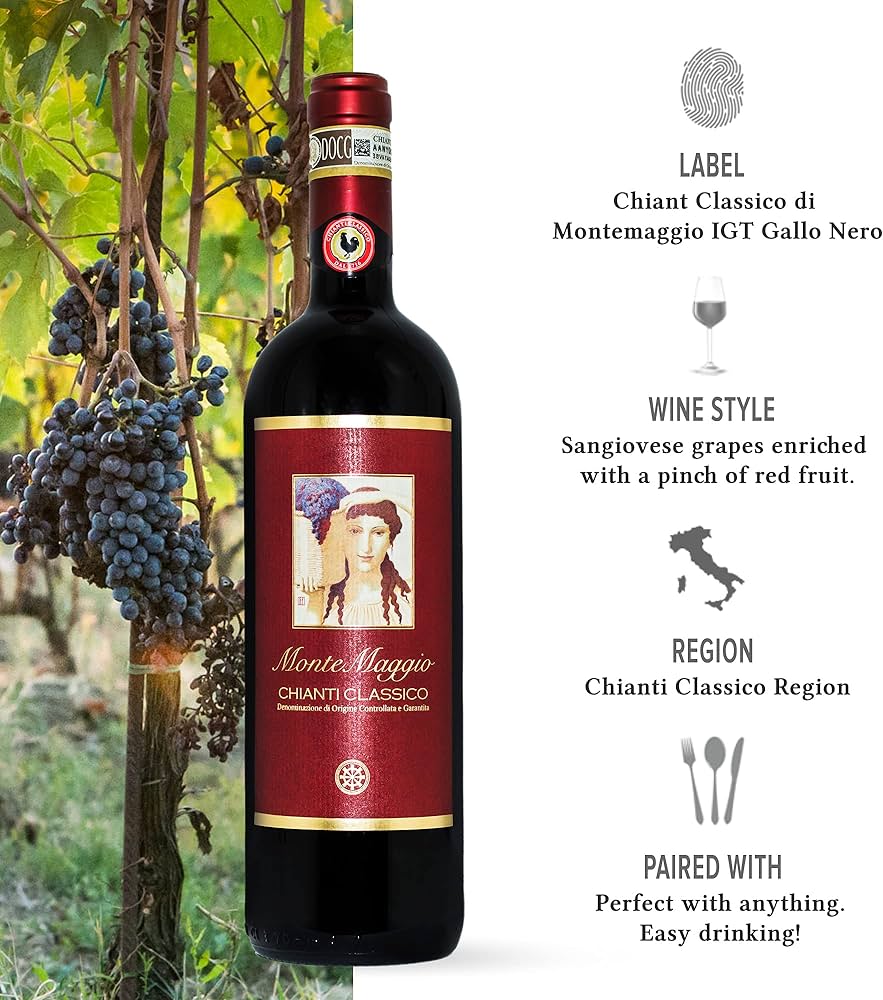
The Evolution of the Chianti Classico Recipe
Chianti Classico, one of Italy’s most renowned wines, is deeply rooted in the rich history and culture of Tuscany. Its recipe has undergone significant transformations over the centuries, influenced by changing viticulture practices, economic needs, and evolving palates. This article explores the journey of Chianti Classico, from its earliest recorded versions to the modern-day interpretation, and how its recipe has evolved to reflect the essence of Tuscany’s winemaking tradition.
Early Origins of Chianti
The first mention of Chianti as a wine dates back to the 13th century, when the region’s winemakers were already cultivating vineyards on the rolling hills of central Tuscany. At that time, Chianti was a white wine. The shift to red wine production began in the late Middle Ages as the Sangiovese grape gained prominence in the region.
In 1716, the Grand Duke of Tuscany, Cosimo III de’ Medici, officially defined the boundaries of the Chianti region, which laid the groundwork for modern Chianti Classico. However, the recipe for the wine remained flexible, varying from village to village.
The Ricasoli Formula
The most significant turning point in the evolution of Chianti’s recipe came in 1872, when Bettino Ricasoli, a prominent Tuscan nobleman and winemaker, formulated what is now known as the “Ricasoli Formula.” His version of Chianti consisted of 70% Sangiovese, 15% Canaiolo, 10% Malvasia Bianca, and other local grape varieties. The inclusion of white grapes was intended to soften the tannins and make the wine more approachable in its youth.
Ricasoli’s recipe dominated Chianti production for nearly a century and became the foundation for the wine’s identity. His approach aimed to balance the acidity and tannins of Sangiovese with the fruitiness of Canaiolo and the freshness provided by Malvasia.
The Post-War Period and the Rise of the DOC
In the mid-20th century, Chianti producers faced significant challenges. The economic devastation following World War II forced many winemakers to prioritize quantity over quality. The wine’s reputation suffered, and Chianti became associated with inexpensive, mass-produced wines often sold in straw-covered bottles known as “fiascos.”
To protect and restore Chianti’s image, the Italian government established the Denominazione di Origine Controllata (DOC) system in 1967. The regulations mandated that Chianti wines adhere to specific production standards, including the use of at least 70% Sangiovese and the inclusion of white grape varieties.
The Birth of Chianti Classico DOCG
In 1984, Chianti Classico received the prestigious Denominazione di Origine Controllata e Garantita (DOCG) status, Italy’s highest wine classification. This marked a new era for Chianti Classico, emphasizing quality over quantity. The rules were further refined in the 1990s to improve the wine’s reputation on the global stage.
One of the most significant changes came in 1996, when the use of white grapes was no longer mandatory. Producers were allowed to craft Chianti Classico using only red grape varieties, with a minimum of 80% Sangiovese. This change reflected a growing trend towards more robust, structured wines that could age gracefully.
Modern Interpretations of Chianti Classico
Today, Chianti Classico is celebrated for its depth, complexity, and ability to express the terroir of Tuscany. Modern winemakers have embraced sustainable practices and reduced yields to focus on quality. While Sangiovese remains the backbone of Chianti Classico, many producers experiment with international grape varieties like Merlot and Cabernet Sauvignon to create more contemporary styles.
The Consorzio Vino Chianti Classico, an organization dedicated to promoting and protecting the wine, introduced the “Gran Selezione” classification in 2014. This new tier represents the pinnacle of Chianti Classico, requiring stricter production standards and longer aging periods.
Conclusion
The evolution of the Chianti Classico recipe reflects centuries of tradition, innovation, and adaptation. From its humble beginnings as a white wine to its modern incarnation as a world-class red wine, Chianti Classico has remained a symbol of Tuscany’s rich winemaking heritage. Today, it stands as a testament to the resilience and creativity of the region’s winemakers, who continue to honor tradition while embracing new techniques to produce wines that captivate the world.






Leave a Reply